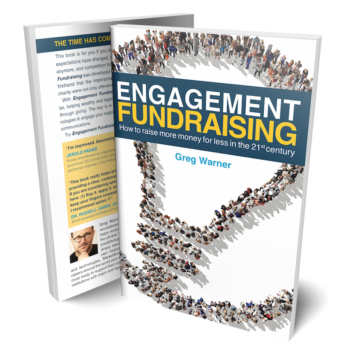We use cookies to ensure that we give you the best experience on our website. By continuing to use this site, you agree to our use of cookies in accordance with our Privacy Policy.
 Login
Login
Your Role
Challenges You Face
results
Learn
Resources
Company
Planting Seeds: The Step Before Cultivation


Funny how we use the word “cultivation” so often but rarely address the preceding step, “planting.” Philanthropic potential is like fertile ground. Figuring out which seeds will take root in the philanthropic soil (and soul) of each person is the key. It’s the agronomic art form of philanthropic facilitation. Some call it matchmaking, others think of it as alignment but seed planting may be a more instructive metaphor.
We miss so many opportunities by thinking of prospective donors as potential institutional supporters who will respond to our “strategic pillars.” It is far wiser to test the seeds of ideas with them – what we could do based on what we have done, how we are poised to respond to a pressing societal concern, or seize an emerging opportunity. Charity is responsive to the urgent. Philanthropy looks forward. The best way to test philanthropic receptivity is to offer ideas in the form of brief concept papers marked “draft.”
More prospective donors will be receptive to the request to test an idea than to a generic request. If they are reluctant to meet in person, we ask if we can send a brief draft that invites their candid response. If they respond well to the idea, we invite them into a deeper, self-guided dialogue to see if the seed will take root. If they’re not keen on the idea, we ask them if we can try another idea on them in a month or two. In that way, the door remains open. A degree of trust has been built. We have previewed our purpose and asked permission to take another step. It’s so much more effective than the veiled or vague requests “to meet.” Donors smell an ambush
When we think of planting seeds, we also respect the natural rhythms of philanthropy. We know that it takes about two years from the time we plant a seed until it fully germinates and produces significant philanthropic fruit. That tells us we need to assemble packets of promising seeds, test them on lots of prospective supporters, listen carefully, customize our responses, and watch which seeds do and don’t take root.
That means if we don’t have seeds or only have old ones, we can’t expect a harvest. If we have too few seeds, we can only expect a meager one. If we don’t think two years in advance, and perfect the two-year cycle, there’s nothing to cultivate and less and less to look forward to.
Jim Langley is the president of Langley Innovations. Langley Innovations provides a range of services to its clients to help them understand the cultural underpinnings of philanthropy and the psychology of donors and, with that knowledge, to develop the most effective strategies and tactics to build broader and more lasting communities of support. Jim has authored numerous books including his most recent book, The Future of Fundraising: Adapting to New Philanthropic Realities, published by Academic Impressions in 2020.
Related Resources:
- Webinar: 4-Step Process for “Reimagining Fundraising Operations”
- The Power of Building Relationships: Why Donors Need Good Fundraisers
- The Essence of Philanthropy: A Vision That Endures
- Comfort Zones: The Places That Foster the Fullest Expressions of Philanthropy
LIKE THIS BLOG POST? SHARE IT AND/OR LEAVE YOUR COMMENTS BELOW!
Get smarter with the SmartIdeas blog
Subscribe to our blog today and get actionable fundraising ideas delivered straight to your inbox!
